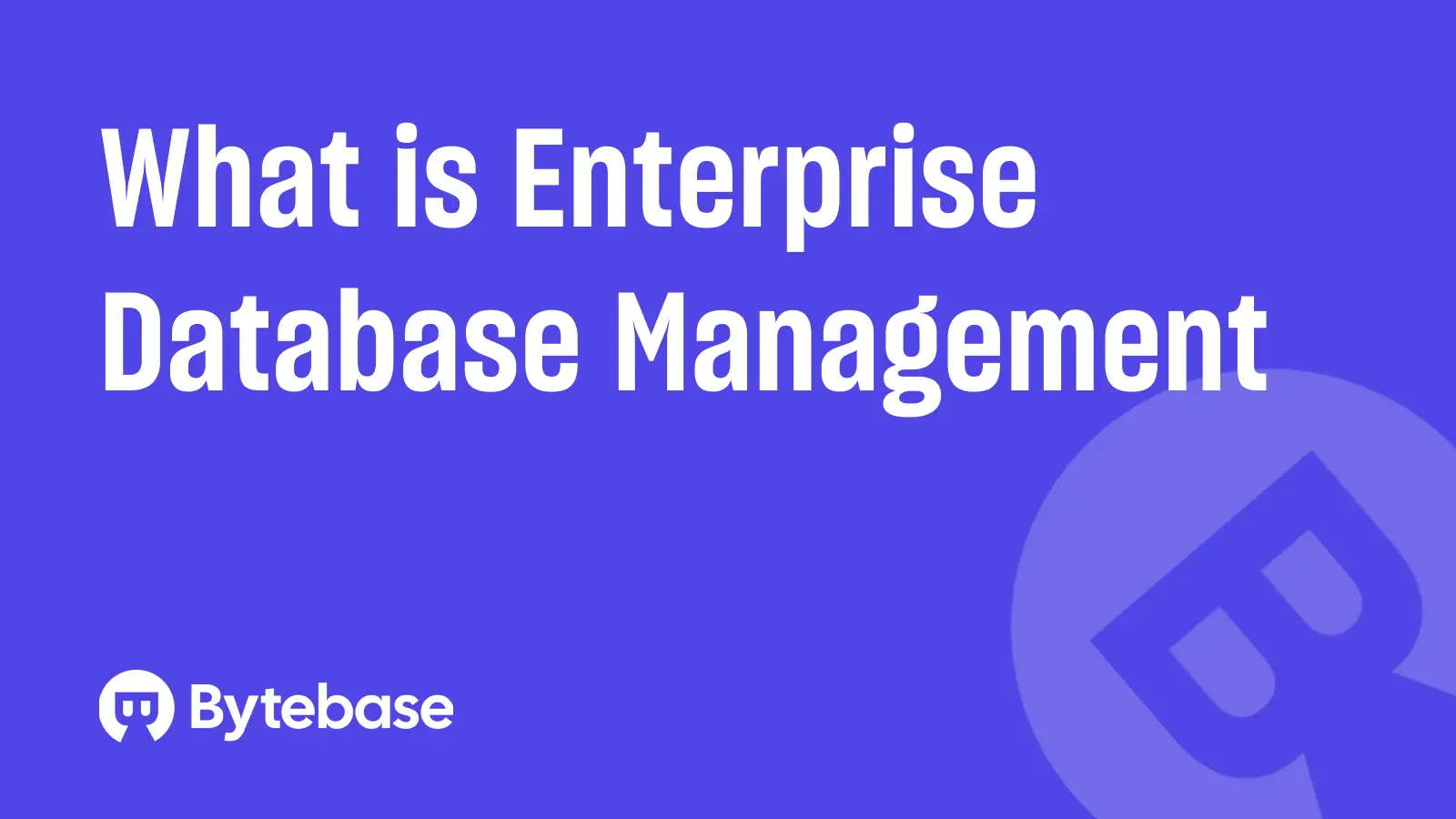
What is Enterprise Database Management?
Enterprise Database Management (EDM) is the practice of organizing, securing, and optimizing database systems across large organizations. It encompasses the tools, processes, and strategies needed to manage multiple database platforms while ensuring data integrity, security, regulatory compliance, and business continuity. Unlike basic database administration, EDM coordinates cross-functional teams—developers, DBAs, security, and platform engineers—to handle complex database ecosystems at scale:
- Multiple databases: PostgreSQL, MySQL, Oracle, SQL Server, MongoDB—all at once
- Cross-functional teams: Developers, DBAs, security, platform teams—all need access
- Regulatory compliance: GDPR, HIPAA, PCI-DSS, SOC2—all enforced
- Scale: Petabytes of data, global distribution
- Business continuity: Zero downtime, instant recovery
Brief History of Enterprise Database Management
Standalone Databases (1970s-1990s)
Early databases were command-line only. IBM created IMS (1966) for NASA, then System R (1974-1977) introduced SQL. Oracle commercialized SQL in 1979. DBAs typed commands, everyone else waited. This couldn't scale.
Rise of Database Management Tools (1990s-2010s)
Databases alone weren't enough. Oracle launched Oracle Enterprise Manager (OEM) in 1996, Microsoft followed with SQL Server Management Studio (SSMS). Both dominant vendors creating management tools wasn't coincidence—enterprises demanded better control. These tools replaced command lines with visual interfaces for monitoring, backups, and optimization.
Cloud Era (2010s-2022)
Cloud providers changed the game. AWS RDS, Azure SQL Database, Google Cloud SQL—they offered simplified versions of what OEM and SSMS provided. One-click backups, automatic failovers, built-in monitoring. No more infrastructure management. DBAs could focus on data, not servers. But these cloud consoles still operated in silos, managing databases in isolation from development pipelines.
The AI Shift (2023-Present)
Large language models transformed expectations. Natural language to SQL, AI-assisted schema reviews, automated migration generation—development workflows finally got intelligent assistance. On the operations side: predictive scaling, anomaly detection, self-healing databases. AI also tackled governance—sensitive data discovery, automated compliance checks, intelligent access recommendations.
The breakthrough: AI bridges the gap between operations and development. Database changes that took days now happen in hours, with AI handling the translation between what developers want and what databases need.
The Gap Between Operations and Development Workflows
These tools handled operations well but ignored development needs. No version control integration. No CI/CD pipelines. Security teams managed access separately. Platform teams couldn't automate provisioning.
Cloud made this problem more obvious. Applications deployed in minutes, databases still took days. Developers had CI/CD for code, but database changes remained manual tickets. Cloud promised agility—databases became the bottleneck.
The core problem: these tools focused on operational tasks, not collaborative workflows. Modern enterprises need all teams working together—traditional tools never delivered that.
The AI shift adds new complexity: validating AI-generated changes, protecting sensitive data from model exposure, and deciding when to trust automation versus human judgment.
In our next article, we'll explore the evolution of enterprise database management in detail—tracing its journey from mainframe-era centralized systems through client-server architectures to cloud-native platforms and the AI shift, and examining how these changes are reshaping database management for modern development teams.


